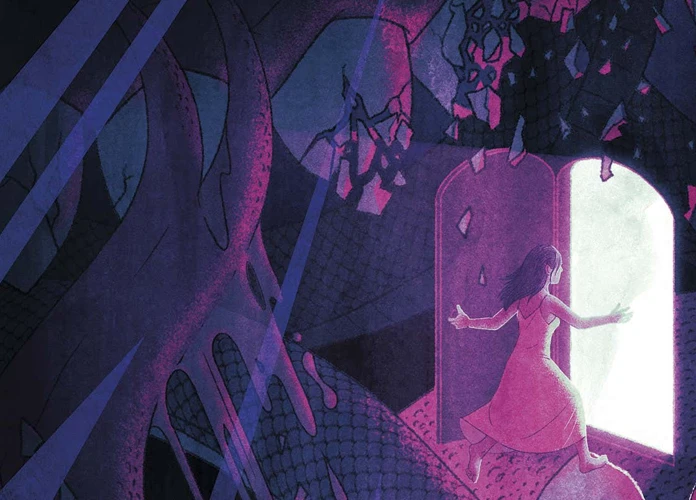Have you ever woken up in the middle of the night, drenched in sweat, gasping for breath, after experiencing a terrifying dream? Nightmares are a common occurrence for many people, and they can leave us feeling shaken and disturbed long after we wake up. But what exactly are nightmares, and why do we have them? In this article, we will delve into the fascinating world of dreams to understand the role of fear in our sleeping minds. We will explore the power of fear, the connection between our subconscious fears and nightmares, the scientific basis behind these unsettling dreams, and the various theories on dream analysis. So get ready to uncover the mysteries of the night and gain a deeper understanding of the science behind nightmares.
The Basics of Dreams

Dreams have intrigued and fascinated us for centuries, often serving as a source of inspiration, fear, or confusion. They are a complex phenomenon that occurs during the rapid eye movement (REM) sleep stage, and they can encompass a wide range of experiences and emotions. During this stage, our brain becomes highly active, even more so than when we are awake. It is during this time that our subconscious mind takes center stage, and our imagination runs wild. Dreams can be vivid and intense, blurring the line between reality and fantasy. They can be fantastical, filled with strange creatures, surreal landscapes, and impossible events. Dreams can also be mundane, reflecting our everyday experiences and concerns. They can evoke a range of emotions, from joy and exhilaration to sadness and fear. In fact, fear is a common theme in dreams, and it often takes center stage in nightmares. Our dreams are influenced by a multitude of factors, including our experiences, memories, emotions, and even external stimuli. They can provide valuable insights into our inner thoughts, desires, and fears, and they can sometimes serve as a form of emotional processing and problem-solving. So, whether you find yourself soaring through the skies or facing your worst fears in the depths of a nightmare, dreams continue to captivate and challenge our understanding of the human mind and consciousness.
The Nature of Nightmares

Nightmares are a particular type of dream that elicit intense feelings of fear, terror, and distress. They often occur during the REM sleep stage and can disrupt our sleep, leaving us feeling unsettled and anxious upon awakening. These unpleasant dreams can feature a variety of themes, such as being chased, attacked, or experiencing a life-threatening situation. Nightmares can be highly vivid and realistic, making it difficult to distinguish them from actual events. They can leave lingering emotional and physiological effects, impacting our mood, sleep quality, and overall mental well-being. While experiencing the occasional nightmare is normal, recurring nightmares can be a sign of underlying stress, trauma, or other psychological factors. Understanding the nature of nightmares is essential in managing their frequency and minimizing their impact on our daily lives. By implementing effective techniques and seeking professional help if necessary, we can work towards a better sleep quality and improved mental health.
1. Definition of Nightmares
Nightmares are intense, distressing dreams that can evoke a strong emotional response, typically characterized by fear, terror, or anxiety. They often involve scenarios that are threatening or dangerous, leaving the dreamer feeling vulnerable and overwhelmed. The content of nightmares can vary widely from person to person, but some common themes include being chased or attacked, experiencing natural disasters, encountering supernatural beings, or reliving traumatic events. Nightmares can occur during any stage of sleep, but they are most commonly experienced during REM sleep, the stage associated with vivid dreaming. Unlike regular dreams that are quickly forgotten upon waking, nightmares tend to linger in our minds, causing feelings of unease and lingering anxiety. These haunting dreams can disrupt sleep patterns, making it difficult to fall back asleep and leading to a sense of tiredness and unrest upon waking. While an occasional nightmare is normal, recurrent nightmares can be a sign of underlying sleep disturbances or psychological issues. It’s important to address frequent nightmares to ensure quality sleep and maintain overall mental well-being.
2. Common Themes in Nightmares
Common themes in nightmares can vary from person to person, but there are certain recurring motifs that are frequently reported. One prevalent theme is being chased or hunted by a relentless pursuer. This can manifest in various forms, such as being chased by a mysterious figure, a wild animal, or even an unknown entity. Another common nightmare theme is experiencing a feeling of helplessness or paralysis. In these dreams, individuals often find themselves unable to move, speak, or defend themselves against perceived threats. Falling from great heights is also a common nightmare scenario. This dream can evoke a sense of fear and vulnerability as the dreamer plummets uncontrollably through the air. Other recurring themes include being lost or trapped, experiencing physical harm or injury, encountering supernatural beings or monsters, or even witnessing the death of loved ones. These nightmares often leave individuals feeling a sense of distress, anxiety, and unease upon waking. Understanding these common themes can provide insight into the fears, anxieties, and unresolved emotions that may be lurking in our subconscious minds. By recognizing and exploring these themes, we can begin to unravel the underlying psychological factors that contribute to the manifestation of our nightmares.
The Power of Fear
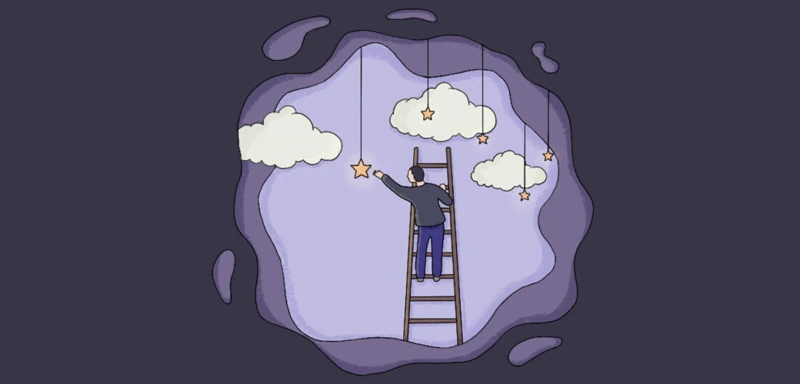
Fear is a powerful emotion that has a profound impact on our dreams and nightmares. In fact, fear serves as a primal instinct that has been essential for human survival throughout evolution. When we experience fear in our dreams, it triggers a cascade of physiological responses in our bodies. Our heart rate increases, our breathing becomes rapid, and our muscles tense as if preparing for a fight or flight response. This physiological arousal during nightmares is a result of the activation of the amygdala, the part of our brain responsible for processing emotions, particularly fear. The amygdala plays a crucial role in our nightmares, heightening our emotional reactions and intensifying the overall experience. Interestingly, the presence of fear in dreams may serve an evolutionary purpose, allowing us to rehearse and prepare for potential threats in our waking lives. By experiencing fear in a controlled environment during dreams, we may be better equipped to navigate similar challenges when awake. Fear can also serve as a symbol or metaphor in our dreams, highlighting underlying anxieties or unresolved issues in our lives. Understanding the power of fear in dreams can offer valuable insights into the inner workings of our subconscious mind and help us unravel the deeper meanings behind our nocturnal experiences.
1. The evolutionary purpose of fear in dreams
The evolutionary purpose of fear in dreams is a fascinating aspect of our subconscious mind. Throughout human history, fear has played a crucial role in our survival. It has allowed us to recognize and respond to potential threats, triggering the fight-or-flight response and boosting our chances of survival. In the context of dreams, fear serves a similar purpose. When we experience fearful situations in our dreams, our brain activates the same regions associated with real-life fear responses. This activation helps us practice and prepare for potential dangers, enhancing our ability to react appropriately in threatening situations. Dreams serve as a training ground for our brains, allowing us to simulate dangerous scenarios without real-life consequences. This simulated fear helps to sharpen our instincts and improve our ability to navigate challenging and potentially hazardous situations. While nightmares can be distressing, they actually serve a protective function by preparing us to face our fears and develop adaptive responses. Understanding the evolutionary purpose of fear in dreams can help us appreciate the significance of these intense and often unsettling experiences. To further explore techniques for managing nightmares, consider incorporating nightmare medications into your routine, or try implementing tips and techniques for preventing nightmares for a better night’s sleep and improved mental health.
2. The physiological response to fear during nightmares
During nightmares, our bodies don’t just experience fear on an emotional level; they also undergo a series of physiological responses. When we come face-to-face with a terrifying scenario in our dreams, our sympathetic nervous system kicks into high gear. This triggers the “fight-or-flight” response, a primal survival mechanism designed to prepare us to either confront or escape from danger. The release of stress hormones, such as adrenaline and cortisol, floods our bloodstream, causing an increase in heart rate, blood pressure, and respiration rate. Our muscles tense up, ready to either fight off the threat or flee from it. These physical reactions to fear during nightmares can be intense and very real, leaving us feeling breathless, sweaty, and with a racing heart upon waking up. The physiological response to fear in nightmares is a testament to the powerful influence that our dreams have on our bodies, blurring the line between the imaginary and the physical. Understanding these responses can provide valuable insights into the interplay between our minds and bodies during sleep and how nightmares can impact our overall well-being. To learn more about the relationship between nightmares, sleep quality, and mental health, check out our article on nightmares and mental health.
Unveiling the Subconscious Mind
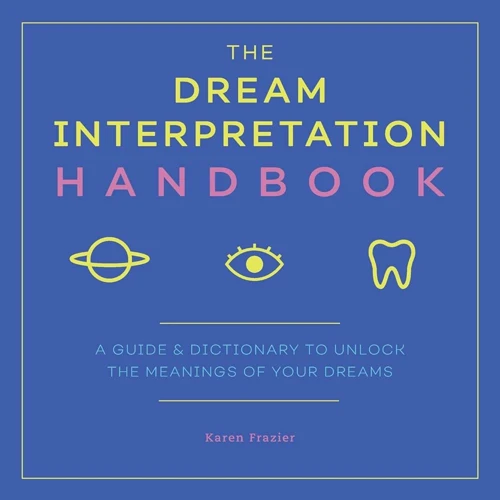
Deep within the recesses of our minds lies the vast expanse of the subconscious, a realm that holds the key to our hidden fears, desires, and memories. It is in this enigmatic landscape that nightmares often find their roots. Connecting directly to our primal instincts, nightmares serve as a gateway into our subconscious mind, unveiling the fears and anxieties that we may not even be aware of in our waking lives. Our subconscious mind is a reservoir of emotions, experiences, and thoughts that have been tucked away, and it is during sleep that these repressed elements can manifest in the form of vivid and unsettling dreams. Nightmares can provide valuable insights into our psyche, acting as a window into the deepest parts of ourselves. By confronting these fears in our dreams, we can potentially gain a better understanding of our emotional landscape and work towards resolving any underlying traumas or anxieties that may be holding us back. Unveiling the subconscious mind is a journey of self-discovery, and nightmares serve as both guides and catalysts for this exploration.
1. The link between subconscious fears and nightmares
The connection between subconscious fears and nightmares is a fascinating aspect of dream psychology. Dreams often serve as a window into our deepest fears and anxieties, allowing us to explore and process these emotions on a subconscious level. When we are awake, we may suppress or ignore our fears, but they have a way of resurfacing in our dreams. Our subconscious mind uses nightmares as a means to confront and address these fears.
One theory suggests that nightmares serve an adaptive purpose. By experiencing fear and anxiety in a controlled environment like a dream, our subconscious mind learns to react and cope with these emotions in a safe space. It allows us to practice facing our fears and develop the necessary coping mechanisms to deal with them in real life. This theory aligns with the evolutionary concept of dreams as a mechanism for survival and self-preservation.
Another explanation for the link between subconscious fears and nightmares lies in the idea of dream symbolism. Our dreams often use symbols and imagery to represent our fears and concerns. These symbols may vary from person to person based on their unique experiences and associations. For example, someone who has a fear of heights may have recurring nightmares of falling from tall buildings or cliffs. These nightmares serve as a manifestation of their subconscious fear, allowing them to confront and process it.
Research has shown that nightmares are more common in individuals who have experienced trauma or are suffering from anxiety disorders. The subconscious mind holds onto these traumatic experiences, and they can manifest as nightmares in an attempt to process and heal from them. Nightmares can act as a way for our minds to work through unresolved emotions and find resolution.
Understanding the link between subconscious fears and nightmares can provide valuable insights into our inner vulnerabilities and fears. It reminds us of the importance of addressing and confronting these fears in our waking life, as they can affect our well-being and overall mental health. By acknowledging and understanding our subconscious fears, we can work towards healing and finding strength in the face of adversity.
2. How nightmares can serve as a window into your psyche
Nightmares have a fascinating way of providing us with a glimpse into the deepest corners of our psyche. These unsettling dreams can serve as a window into our inner thoughts, fears, and unresolved emotions. When we experience nightmares, our subconscious mind is free to express itself without the conscious filters that we have during waking hours. Dreams, including nightmares, are heavily influenced by our experiences, beliefs, and traumas. They can reveal hidden anxieties, past experiences, or buried emotions that we may not be consciously aware of. For example, recurring nightmares about being chased may indicate a persistent fear of being pursued or feeling powerless in certain aspects of our lives. Nightmares can also be symbolic, using vivid imagery to communicate complex emotions or unresolved conflicts. Our subconscious mind tries to process and make sense of our fears and concerns through the lens of our dreams. By analyzing the themes, symbols, and emotions in our nightmares, we can gain valuable insights into our inner world and potentially uncover unresolved issues that may require attention or healing. This introspective journey can lead to personal growth, self-awareness, and a deeper understanding of ourselves. So, instead of dismissing nightmares as mere figments of our imagination, we can embrace them as powerful tools for self-discovery and introspection.
The Science Behind Nightmares
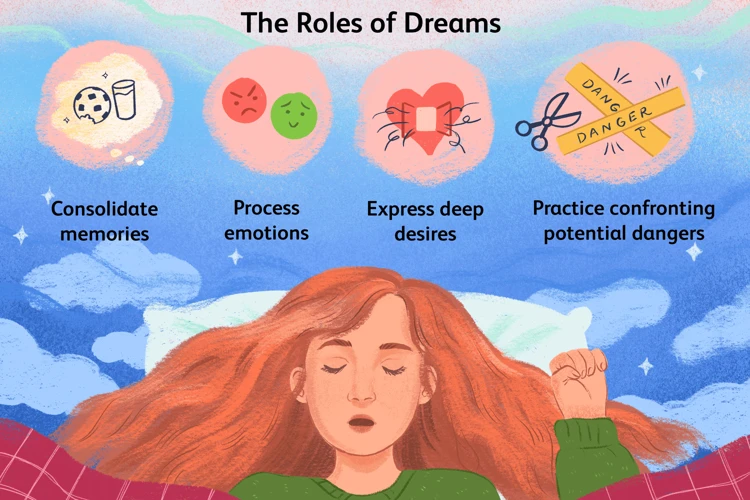
The science behind nightmares delves into the intricate workings of the brain and the impact of various factors on our dream experiences. One key player in nightmares is the amygdala, an almond-shaped structure in the brain that plays a crucial role in the processing of emotions, especially fear. It is responsible for triggering the fight-or-flight response and activating stress hormones when we perceive a threat. During nightmares, the amygdala becomes hyperactive, creating a heightened sense of fear and anxiety. Additionally, stress and trauma can significantly influence the frequency and intensity of nightmares. Research suggests that individuals who have experienced traumatic events are more likely to have recurrent nightmares as a result of the psychological and physiological effects of trauma. While nightmares can be distressing, they can also serve as a window into our psyche, allowing us to explore and confront our subconscious fears and anxieties. Understanding the scientific basis of nightmares can provide insights into how our emotions, memories, and past experiences shape our dream world.
1. The role of the amygdala in nightmares
The amygdala, a small almond-shaped structure located deep within the brain, plays a crucial role in our experience of emotions and fear, and it also has a significant role in nightmares. This region is responsible for detecting and processing threats and triggering the body’s fear response. During nightmares, the amygdala becomes hyperactive, leading to intensified feelings of fear and anxiety. It activates the body’s stress response system, causing an increase in heart rate, rapid breathing, and a surge of adrenaline. This heightened state of arousal can make nightmares feel incredibly real and terrifying. The amygdala’s involvement in nightmares is linked to its function in processing and storing emotional memories. Traumatic experiences or events that have had a profound emotional impact on us can significantly influence the frequency and intensity of nightmares. The amygdala’s role in nightmares highlights the intricate connection between the emotional center of the brain and our dream experiences. Understanding the role of the amygdala in nightmares provides valuable insights into the complex interplay between emotions and dreams.
2. The impact of stress and trauma on nightmare frequency
Stress and trauma can have a significant impact on the frequency of nightmares. When we experience high levels of stress or have undergone a traumatic event, our brains can become hypersensitive and reactive during the sleep cycle. This heightened state of arousal can lead to an increased likelihood of nightmares. Stressful situations, such as financial difficulties, relationship problems, or work-related pressures, can create a sense of anxiety and unease that can manifest in our dreams. Additionally, individuals who have experienced trauma, such as physical or emotional abuse, accidents, or combat, may be more prone to nightmares as their subconscious mind tries to process and make sense of the traumatic experiences. Nightmares related to trauma can be particularly distressing, as they may replay the traumatic event or bring back intense emotions associated with it. These nightmares can contribute to the development or exacerbation of conditions such as post-traumatic stress disorder (PTSD) and can significantly impact an individual’s quality of life and overall well-being. It is important to note that not everyone who experiences stress or trauma will necessarily have nightmares, as individuals vary in their susceptibility and coping mechanisms. However, for those who do experience an increase in nightmares, it is crucial to seek support and appropriate treatment from mental health professionals to address the underlying stress or trauma and alleviate the frequency and intensity of these distressing dreams.
Dream Analysis and Interpretation
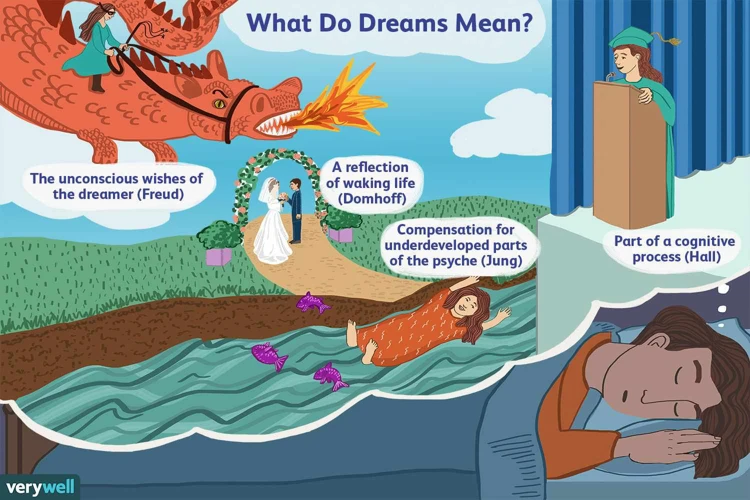
Dream Analysis and Interpretation serve as tools for unlocking the hidden meanings and symbolism behind our dreams. Psychoanalytic theories, developed by Sigmund Freud, propose that dreams are a window into the unconscious mind, where repressed desires and unresolved conflicts manifest themselves symbolically. According to Freud, dreams contain latent content, which represents the hidden wishes and desires, and manifest content, which is the actual imagery and storyline of the dream. To decipher the meaning of a dream, one must uncover the hidden symbols and associations embedded within. Another approach to dream analysis is the Jungian perspective, developed by Carl Jung. Jung believed that dreams tap into the collective unconscious, containing archetypal symbols and motifs that are universally recognized. Analyzing dreams from a Jungian perspective involves identifying these archetypal symbols and exploring their collective meaning. Whether you lean towards Freud’s psychoanalysis or Jung’s collective unconscious, dream analysis provides a fascinating glimpse into the deeper layers of our psyche, allowing us to unravel the mysteries encoded within our dreams and gain a better understanding of ourselves.
1. Psychoanalytic theories on nightmares
Psychoanalytic theories, rooted in the work of Sigmund Freud, offer insight into the interpretation of nightmares. According to Freud, dreams, including nightmares, provide a glimpse into the unconscious mind and fulfill hidden desires that are repressed or suppressed in waking life. In the context of nightmares, Freud believed that they were a manifestation of repressed traumas or unresolved conflicts, often related to early childhood experiences. He proposed that nightmares served as a form of wish fulfillment, allowing the dreamer to express and process their unconscious fears and anxieties. In this framework, the threatening or fearful elements in nightmares symbolize deeper psychological issues and hidden desires. Freud argued that analyzing the manifest content, or the literal events and symbols in the dream, can lead to the uncovering of the latent content, which reveals the true meaning and symbolism behind the dream. While not everyone agrees with Freud’s theories, his ideas have had a significant influence on the way we think about dreams and nightmares. Today, psychoanalytic interpretations of nightmares continue to be explored and expanded upon by psychologists and dream analysts, providing a deeper understanding of the complex interplay between our conscious and unconscious minds.
2. Jungian perspective on the symbolism of nightmares
When it comes to analyzing the symbolism of nightmares, renowned psychologist Carl Jung offers a unique perspective. According to Jungian theory, dreams, including nightmares, are windows into our unconscious mind and can reveal deep-seated fears, desires, and unresolved conflicts. Jung believed that nightmares served as important messages from the unconscious, urging us to address and confront these underlying issues.
In the Jungian perspective, nightmares are seen as valuable sources of insight and transformation. They are symbolic representations of the psyche’s attempt to bring attention to aspects of ourselves that we may have repressed or ignored. Nightmares can be seen as invitations to explore and integrate these shadow aspects of our personality.
Jung emphasized the importance of interpreting the symbols and imagery present in nightmares to uncover their hidden meaning. According to him, the interpretation of symbols in dreams is subjective and personal, as each individual’s experiences and associations differ. For example, a recurring nightmare about being chased may symbolize the dreamer’s avoidance of confronting a problem or an aspect of themselves. In this case, the nightmare serves as a prompt to dive deeper into the underlying fear and take steps towards resolution.
By understanding and addressing the symbolism of nightmares, individuals can embark on a journey of self-discovery and personal growth. Jung believed that integrating the unconscious contents revealed in nightmares could lead to individuation, a process of becoming a whole and balanced individual.
It is important to note that while the Jungian perspective offers valuable insights into the symbolism of nightmares, dream interpretation is subjective, and the meaning of symbols can vary from person to person. Consulting with a qualified professional, such as a Jungian analyst or therapist, can provide further guidance and support in exploring the symbolism and personal significance of nightmares. By delving into the Jungian perspective, individuals can gain a deeper understanding of themselves and their dreams, opening doors to self-awareness and personal transformation.
Managing Nightmares
Managing nightmares can be a crucial step towards getting a good night’s sleep and maintaining overall mental well-being. While occasional nightmares are normal, recurring nightmares can disrupt sleep quality and lead to increased anxiety and distress. Thankfully, there are techniques and strategies that can help reduce the frequency and intensity of nightmares. Firstly, maintaining a consistent sleep routine and creating a soothing bedtime ritual can promote better sleep hygiene. Relaxation techniques such as deep breathing, meditation, and progressive muscle relaxation can help calm the mind before sleep. Additionally, keeping a dream journal and engaging in dream analysis can provide insights into recurring themes and patterns in nightmares, allowing for a deeper understanding of their underlying causes. Seeking professional help, such as therapy or counseling, can also be beneficial in managing nightmares associated with trauma or underlying psychological issues. It’s essential to remember that managing nightmares is a personal journey, and finding the right approach may require some experimentation and patience. By actively addressing and working through nightmares, individuals can take control of their sleep and mental health, promoting a more peaceful and restorative night’s rest.
1. Techniques to reduce nightmare frequency
One of the most common experiences that people seek to avoid is the occurrence of nightmares. Fortunately, there are a variety of techniques that can help reduce the frequency of nightmares and allow for more restful sleep. One approach is to create a relaxing bedtime routine, which can include activities such as reading a book, listening to calming music, or practicing deep breathing exercises. Engaging in relaxation techniques before bed can help to calm the mind and promote a more peaceful sleep environment. Another strategy is to keep a dream journal, where individuals can write down their dreams upon waking. This practice can provide a sense of release and closure, allowing any anxiety or fear associated with the dream to be processed and released. There are certain lifestyle changes that can contribute to a decrease in nightmare frequency. These include maintaining a regular sleep schedule, avoiding stimulating substances such as caffeine and alcohol before bed, and creating a comfortable sleep environment. Lastly, seeking professional help from a therapist or sleep specialist may be beneficial for individuals experiencing persistent and distressing nightmares. Techniques such as cognitive behavioral therapy (CBT) and exposure therapy may be employed to address and manage the underlying causes of nightmares. With the implementation of these techniques and strategies, individuals can take proactive steps towards reducing the occurrence of nightmares and improving their overall sleep quality and mental well-being.
2. Seeking professional help for recurring nightmares
If you find that recurring nightmares are causing significant distress or interfering with your daily life, it may be beneficial to seek professional help. While occasional nightmares are considered normal, persistent and intense nightmares can be indicative of underlying psychological issues that may require intervention. One option is to consult with a therapist or counselor who specializes in dream analysis and trauma. They can help you explore the deeper meanings behind your nightmares and assist you in processing any unresolved emotional issues that may be fueling them. Cognitive-behavioral therapy (CBT) is often used to treat nightmares, as it helps individuals identify and challenge negative thought patterns and develop coping mechanisms to manage fear and anxiety. Additionally, therapists may utilize techniques such as imagery rehearsal therapy (IRT), which involves rewriting and rehearsing the nightmare scenario with a more positive outcome in order to lessen its impact. Medication may also be an option for those experiencing severe and debilitating nightmares, particularly for individuals with post-traumatic stress disorder (PTSD). Certain medications, such as prazosin, have been shown to reduce the frequency and intensity of nightmares. However, it’s important to note that medication should be used in conjunction with therapy and under the guidance of a qualified healthcare professional. Seeking professional help can provide you with the necessary support and guidance to address your recurring nightmares and improve your overall sleep quality and mental well-being.
Conclusion
In conclusion, the science behind nightmares reveals the intriguing and complex nature of our dreams. Nightmares serve as a manifestation of our fears and anxieties, allowing us to confront and process these emotions within the realm of our subconscious mind. The power of fear in dreams is both evolutionary and physiological, alerting us to potential dangers and stimulating a range of physical responses. Our nightmares can also provide valuable insights into our psyche, offering a window into our deepest fears and desires. The amygdala, stress, and trauma all play significant roles in the frequency and intensity of nightmares. Dream analysis and interpretation, from psychoanalytic theories to the symbolism explored by the likes of Carl Jung, provide further avenues for understanding the meaning behind our nightmares. It is important to note that managing nightmares can be approached through various techniques such as relaxation exercises, maintaining a sleep routine, and seeking professional help when recurring nightmares affect our mental well-being. By gaining a greater understanding of nightmares, we can navigate the realm of dreams with a heightened awareness and appreciation for the powerful role fear plays in our nighttime adventures.
Frequently Asked Questions
1. What causes nightmares?
Nightmares can be caused by a variety of factors, including stress, anxiety, trauma, medications, and certain sleep disorders. They often stem from our subconscious fears and unresolved emotions.
2. Are nightmares harmful?
While nightmares can be distressing, they are a normal part of the sleep cycle and do not generally cause harm. However, frequent nightmares or recurring ones can disrupt sleep quality and impact overall well-being.
3. Can eating before bed cause nightmares?
There is limited scientific evidence to suggest that eating before bed can directly cause nightmares. However, consuming heavy or spicy meals close to bedtime may disrupt sleep and increase the likelihood of vivid dreams, including nightmares.
4. Can medication influence nightmares?
Yes, certain medications like antidepressants, beta-blockers, and some blood pressure medications can potentially cause or exacerbate nightmares as a side effect. If you suspect your medication is impacting your dreams, it’s best to consult with your healthcare provider.
5. Do children experience nightmares more frequently?
Yes, nightmares are common among children, especially during their developmental years. Children’s nightmares can stem from various sources, including fears, anxieties, and imagination. Most children grow out of frequent nightmares as they age.
6. Is there a difference between nightmares and night terrors?
Yes, nightmares and night terrors are distinct phenomena. Nightmares occur during REM sleep and are vivid, often causing the dreamer to wake up. On the other hand, night terrors occur during non-REM deep sleep and are characterized by sudden awakenings accompanied by intense fear or confusion.
7. Can you control or change the outcome of a nightmare?
While it may not be possible to control a nightmare in the midst of it, practicing relaxation techniques, such as deep breathing or visualization, before sleep can help reduce the likelihood of nightmares. Additionally, keeping a dream journal and engaging in dream reflection may aid in understanding and processing the underlying emotions.
8. Are recurring nightmares a sign of an underlying psychological issue?
Recurring nightmares can sometimes indicate unresolved psychological issues, such as trauma or anxiety disorders. If recurring nightmares significantly impact your quality of life, it is advisable to seek professional help from a licensed therapist or mental health provider.
9. Can lucid dreaming help prevent nightmares?
Lucid dreaming, where a person is aware they are dreaming and can exert some control over the dream, may potentially help reduce the occurrence or intensity of nightmares. By actively participating in the dream, individuals can confront and transform their fears.
10. Should I be concerned if I rarely remember my dreams or have no nightmares?
Not everyone remembers their dreams, and some individuals may have fewer nightmares than others. This is considered normal variation in dream recall and does not necessarily indicate a problem. Remember, the content and frequency of dreams can vary greatly between individuals.

